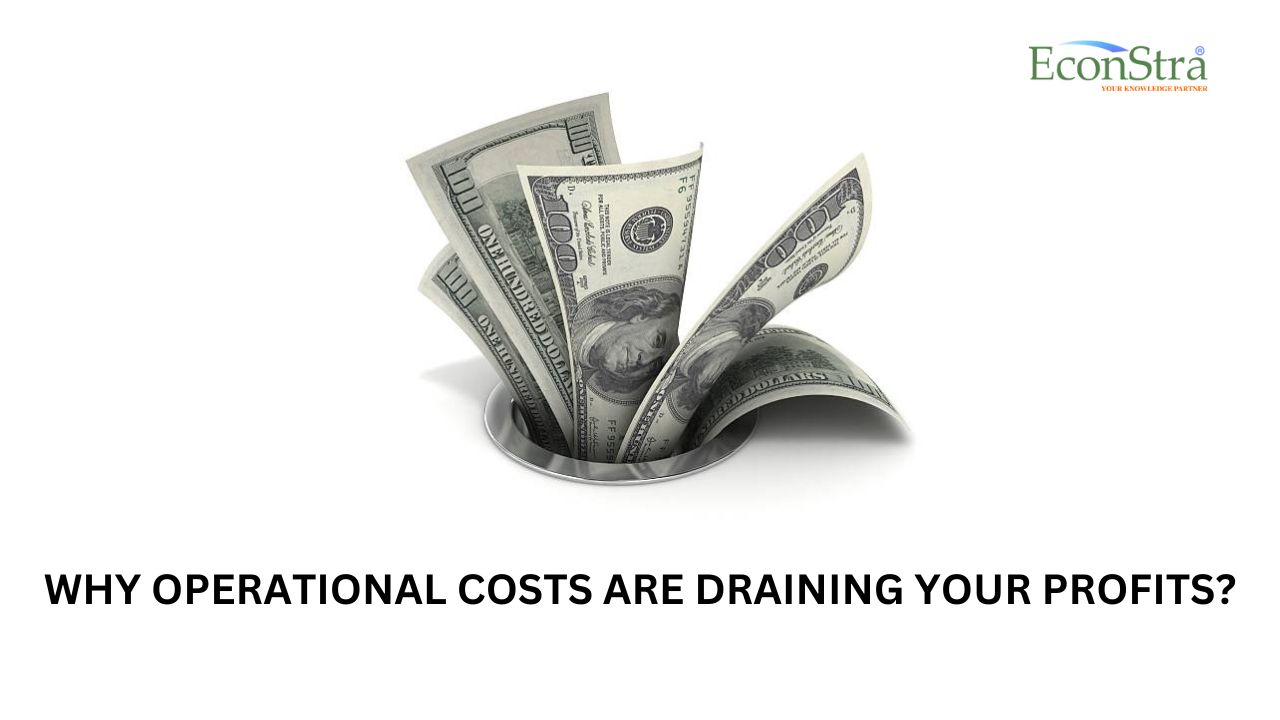by Soumyajit Admin
Share

In the ever-evolving world of business, staying competitive and efficient is essential for long-term success. This is where the concept of Business Process Reengineering (BPR) comes into play. BPR is not a one-size-fits-all solution, and knowing when to implement it can make a significant difference in the outcome of your organizational transformation.
Today, in this blog post, we will explore the critical question: “When should Business Process Reengineering be used?” We will delve into the circumstances and signs that indicate it is time to embrace BPR as a strategic approach to revamp your business processes and drive positive change.
By the end of this article, you’ll have a clear understanding of when and why BPR can be a game-changer for your organization.
Let’s dig into this.
Understanding Business Process Reengineering (BPR)
Before we dive into when BPR should be used, let’s briefly understand what BPR entails. So what is What Is Business Process Reengineering?
Business Process Reengineering (BPR) represents a holistic and transformative approach to reshaping the core operational foundations of an organization. At its core, BPR seeks to overhaul and refine existing business processes with the ultimate goal of achieving several critical objectives. First and foremost, it aims to boost efficiency by streamlining workflows and eliminating redundant or obsolete steps. By doing so, it not only accelerates the pace at which tasks are completed but also minimizes resource wastage, leading to cost reductions.
Moreover, BPR places a strong emphasis on enhancing customer satisfaction. Through the optimization of processes, businesses can respond more promptly to customer needs and deliver higher-quality products or services. Additionally, BPR is a strategic tool for enhancing competitiveness in the market. By leveraging modern technology and innovative practices, it allows organizations to stay ahead of the curve and adapt swiftly to changing market dynamics. In essence, Business Process Reengineering is about more than just improving processes; it’s about reshaping the very essence of how a business operates to thrive in a fast-paced and ever-evolving environment.
When Should Business Process Reengineering Be Used?
Now, let’s explore the situations where BPR can be the most beneficial:
When Your Business Is Underperforming:
When your business finds itself in a state of consistent underperformance, failing to meet targets, or witnessing a decline in market share, these red flags signal the need for Business Process Reengineering (BPR). Frequent missed deadlines, a dip in profitability, and a surge in customer complaints underscore that your current operational methods are no longer effective or sustainable.
In such circumstances, BPR serves as a beacon of hope. It dives deep into the intricate workings of your organization, meticulously identifying the root causes behind these challenges. Once these issues are unearthed, BPR goes a step further by implementing strategic changes and revamping processes. The ultimate aim? To orchestrate a turnaround, breathing new life into your business, and steering it back on the path to success.
Also: What Is Business Process Reengineering In ERP?
When Technology Advancements Are Available:
In our contemporary, fast-paced digital landscape, technological advancements occur at an unprecedented rate. If your business is trailing behind competitors who are adeptly harnessing these new technologies, it serves as an unmistakable clarion call for the adoption of Business Process Reengineering (BPR). Remaining stagnant while your rivals embrace cutting-edge tools and systems can result in significant disadvantages, ranging from diminished efficiency to an erosion of your competitive edge.
The integration of the latest technologies through BPR can catalyze transformative change within your organization. By streamlining processes and automating previously manual tasks, you not only expedite workflows but also liberate human resources for more strategic and creative endeavors. This enhancement in overall productivity ensures that your business is not only keeping pace with the industry but also positioning itself for sustained growth in an increasingly digital world. Embracing BPR as a response to technological evolution is not just a choice; it’s a necessity to remain relevant and thrive in the modern business landscape.
Also read: Benefits Of Business Process Automation
During Mergers and Acquisitions:
Mergers and acquisitions (M&A) mark pivotal moments in a company’s growth trajectory, bringing together disparate entities, processes, systems, and personnel. It is precisely during these junctures that Business Process Reengineering (BPR) emerges as an invaluable strategy. BPR offers the prime opportunity to harmonize and optimize the amalgamated operations, ensuring that the newly formed organization functions as a cohesive and efficient unit.
By conducting a meticulous analysis of each component involved in the M&A, BPR identifies redundancies and inefficiencies that may have been overlooked in the initial integration process. Streamlining operations, eliminating duplications, and aligning systems not only reduce costs but also enhance productivity and foster better collaboration among the workforce. In essence, BPR serves as the architect of a harmonious and agile organization post-M&A, where the sum of the parts is greater than the individual entities, ensuring long-term success and growth.
When Customer Expectations Change:
In the ever-evolving landscape of business, customer expectations are a dynamic force that can significantly impact an organization’s success. It is imperative for businesses to remain attuned to these changing expectations and adjust their processes accordingly. When customers start demanding faster response times, greater customization, or elevated service quality, it’s a clear call to action for Business Process Reengineering (BPR).
BPR provides the framework to realign your business processes with these new customer-centric requirements. By optimizing workflows, automating tasks, and enhancing communication channels, you can not only meet but exceed these evolving expectations. Failing to adapt and failing to implement BPR may have dire consequences, as it opens the door for more agile competitors to swoop in and cater to the needs of these dissatisfied customers. Losing market share becomes a real risk when your processes cannot keep pace with changing customer demands. Thus, BPR acts as a vital tool to ensure your organization remains not just competitive but ahead of the curve in delivering exceptional customer experiences.
When Operating Costs Are Rising:
Escalating operational costs pose a substantial threat to a company’s bottom line and its ability to maintain competitiveness. When expenses surge, yet revenue remains stagnant, it becomes evident that your existing processes warrant a critical reevaluation. Business Process Reengineering (BPR) serves as the remedy for this predicament by meticulously scrutinizing your operations.
BPR doesn’t just identify cost-saving opportunities; it offers a comprehensive strategy for their implementation. By streamlining workflows, eliminating redundancies, and introducing efficient resource allocation, BPR optimizes your operational efficiency. The result is a leaner and more agile organization that can allocate resources strategically, enhance profitability, and preserve competitiveness in a demanding marketplace. Recognizing the need for BPR in times of rising costs is not merely a prudent decision but often a survival strategy that ensures long-term financial health and sustained growth.
Also read: How Does Business Automation Help In Cost Reduction?
When Compliance and Regulations Change:
In the realm of business, regulatory landscapes are akin to shifting sands, perpetually evolving to address changing societal and economic dynamics. Failing to adapt your business processes to conform to these ever-changing regulations can expose your organization to multifaceted risks. Non-compliance not only invites legal repercussions but can also inflict lasting reputational damage, eroding trust among stakeholders.
Business Process Reengineering (BPR) emerges as a safeguard against such perils. By undertaking a comprehensive analysis of your processes and their alignment with the latest regulatory mandates, BPR ensures that your organization remains in full compliance. This proactive approach minimizes the risk of costly legal battles, penalties, and the erosion of trust in your brand. Ultimately, BPR serves as the guardian of your business’s integrity, shielding it from the uncertainties of an evolving regulatory landscape.
When Employee Morale Is Low:
The heartbeat of any organization is its workforce, and when that heartbeat falters due to employee dissatisfaction, the repercussions are far-reaching. A decline in morale, elevated stress levels, and a palpable lack of enthusiasm among your staff are glaring indicators that it’s time for Business Process Reengineering (BPR).
BPR not only identifies the root causes of employee discontent but also provides a platform for their voices to be heard. By actively involving employees in the process and attentively addressing their concerns, BPR can rekindle their enthusiasm and boost morale. Creating a more positive and efficient work environment not only enhances employee retention but also translates into increased productivity, improved customer interactions, and ultimately, a healthier bottom line. BPR, in this context, acts as a catalyst for positive change, transforming workplaces into vibrant and thriving hubs of innovation and productivity.
When Your Market Dynamics Shift:
In the dynamic realm of business, markets are in a constant state of flux, subject to rapid and unpredictable changes. New competitors can emerge overnight, customer preferences can shift abruptly, and economic fluctuations can disrupt the status quo. In the face of such volatility, Business Process Reengineering (BPR) emerges as a strategic imperative.
BPR empowers your organization to be proactive rather than reactive in the face of market dynamics. By enhancing process agility and responsiveness, it enables your business to adapt swiftly to changing conditions. BPR equips you with the tools to identify emerging trends, seize opportunities, and effectively navigate challenges, ensuring that your business remains not just relevant but resilient in the ever-evolving marketplace.
NOTE:
In the fast-changing world of business, using Business Process Reengineering (BPR) is like giving your company a smart upgrade. ECONSTRA, the expert business consultants in business management systems, say that BPR is super useful when your business feels stuck, things are not working smoothly, or your systems need a tech boost. ECONSTRA helps businesses figure out what processes can be made better, where things are getting slow, and how to use the latest technology to fix it all. This smart move not only makes your business nimble and quick but also helps you stay strong in a fast-changing market. ECONSTRA makes sure that their solutions are just right for each business, making them ready for success in today’s business world.
Conclusion On: When Should Business Process Reengineering Be Used?
In today’s dynamic business landscape, knowing when to implement Business Process Reengineering is crucial for maintaining competitiveness and sustainability. By recognizing the signs and situations discussed in this article, you can make informed decisions about when to embark on the journey of process transformation.
Remember that BPR is not a quick fix but a strategic approach to revamping your business processes for long-term success. It requires careful planning, the involvement of key stakeholders, and a commitment to change. When executed correctly, BPR can lead to increased efficiency, reduced costs, improved customer satisfaction, and a stronger competitive position in the market.
To sum it up, when your business is underperforming, when technological advancements are available, during mergers and acquisitions when customer expectations change, when operating costs are rising, when compliance and regulations change, when employee morale is low, and when market dynamics shift—these are all scenarios where Business Process Reengineering can be a powerful tool for transformation and growth. So, keep a watchful eye on your organization’s performance and be ready to embrace BPR when the time is right. Your business’s future success may depend on it.
STAY IN THE LOOP
Subscribe to our free newsletter.
In today’s competitive business landscape, companies are constantly seeking ways to reduce operational costs while maintaining or improving efficiency and customer satisfaction. Customer Relationship Management (CRM) systems have emerged as vital tools that enable businesses to achieve these goals. As a leading business consultancy, Econstra understands the importance of leveraging CRM technology to streamline operations, […]
Why Operational Costs Are Draining Your Profits? Operational costs are a critical aspect of running a successful business, but when not managed properly, they can drain your profits and stifle growth. In a competitive market, maintaining profitability requires keen oversight of expenses and strategic planning. Econstra, as a leading business consultancy, provides insights and strategies […]
In the rapidly advancing digital landscape, Artificial Intelligence (AI) tools have emerged as transformative assets for businesses. Their potential to enhance efficiency, streamline operations, and drive innovation makes them invaluable for business consultants and organizations worldwide. For business consultants in India, AI’s strategic application can be particularly advantageous in navigating a diverse and dynamic market. […]
In today’s competitive business landscape, marketing is more crucial than ever. Companies are constantly seeking innovative strategies to stay ahead of the curve. Yet, navigating the complexities of modern marketing requires more than just creativity; it demands expertise and strategic insight. This is where a Business Consultant can make a transformative impact. Business consultants offer […]





